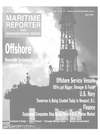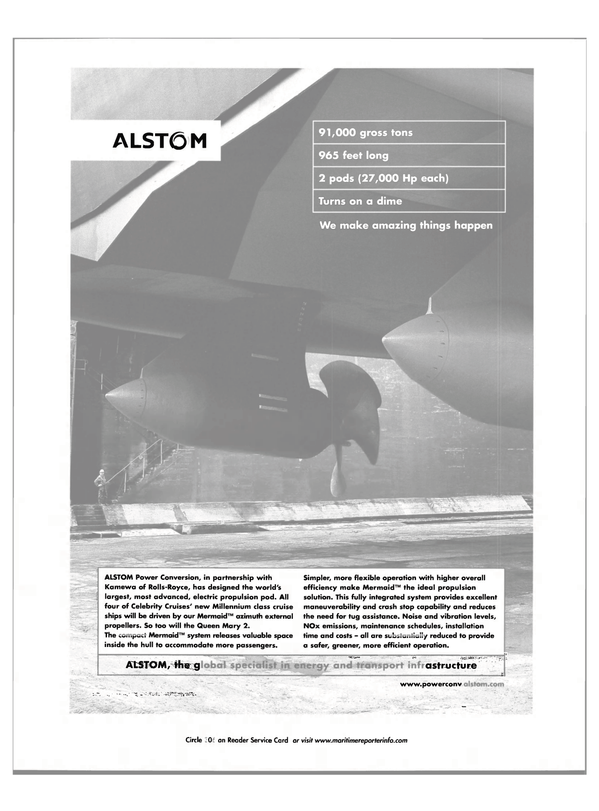
Protection Zones In Place For USS Roosevelt's Return
As part of the Coast Guard's ongoing port security mission, extra Coast Guard boats and personnel provided armed escort and enforcing the Naval Vessel Protection Zone (NVPZ) surrounding the USS Roosevelt Battle Group during its return to Hampton Roads, Va. on March 27.
"We're very proud of what our Sailors, Soldiers, Airmen and Marines are doing overseas to protect our homeland," Coast Guard spokesman Lt. Cmdr.
Brendan McPherson said. "These protection zones are a way of showing our support for our troops who routinely put themselves in harm's way for our Nation." More than 150 Coast Guard men and women from Coast Guard Group Hampton Roads, the Marine Safety Office and a number of local boats and cutters, including the 210-ft. (64-m) cutter Diligence from Wilmington, N.C., conducted a channel clearing operation on the morning of March 27.
A 500-yd. protection zone around each ship was also be enforced. Non-commercial vessels must remain at least 100 yds. away from any naval vessel and operate at minimum speed when within 500 yds.
All outbound commercial vessels on the southern and eastern branches of the Elizabeth River must sail two hours before the scheduled naval vessel movement or must remain astern of and maintain a safe distance from the naval vessels.
All inbound commercial vessels must be in the Capes one and one half hours ahead of the scheduled naval vessel to transit ahead of the battle group. Otherwise they must remain at anchor at Lynhaven Anchorage or stay outside of the buoy marking the "C" anchorage.
Recreational vessels will be required to comply with the NVPZ restrictions and comply with all orders directed by the Coast Guard and Navy patrols.
Coast Guard Atlantic Area Commander Vice. Adm. Thad Allen established the Naval Vessel Protection Zone regulation effective from Sept. 14, 2001 to June 15, 2002, providing another safety measure for Naval ships in the wake of the attacks on America.
A U.S. Naval vessel is considered to be any vessel owned, operated, chartered or leased by the U.S. Navy; and any vessel under the operational control of the U.S. Navy or a unified commander.
As a result, the establishment and enforcement of NVPZs is a function directly involved in and necessary to military operations and the safety and security of naval commanders and personnel.
Details Excerpted From the Temporary Regulation • All vessels within 500 yards of a U.S.
naval vessel must operate at the minimum speed necessary to maintain a safe course and proceed as directed by the official patrol.
• Vessels are not allowed within 100 yds.
of a U.S. naval vessel, unless authorized by USCG or Navy official.
• Vessels requesting to pass within 100 yds. of a U.S. naval vessel must contact the official patrol on VHF-FM channel 16.
• Under some circumstances, the official patrol may permit vessels that can only operate safely in a navigable channel to pass within 100 yds. of a U.S. naval vessel.
• Under similar conditions, commercial vessels anchored in a designated anchorage area may be permitted to remain at anchor within 100 yards of passing naval vessels.
Read Protection Zones In Place For USS Roosevelt's Return in Pdf, Flash or Html5 edition of April 2002 Maritime Reporter
Other stories from April 2002 issue
Content
- U.S., Spain Team To Develop New Warship page: 4
- Bennis to Lead Maritime, Land Security page: 4
- Halmatic To Supply RIBs For Maritime & Coastguard Agency page: 8
- Germanischer Lloyd Reorganizes Operations page: 11
- Celebrity Cancels Summit And Infinity Sailings page: 11
- Kvaerner And Aker Maritime Join Forces page: 12
- Royal Caribbean And Celebrity Announce Key Appointments page: 13
- Key Port Security Measure Passed page: 16
- Boston Whaler Unveils "Robot" Security Boat page: 18
- Protection Zones In Place For USS Roosevelt's Return page: 19
- DOT Outlines Smart Card Concept For Transportation Workers page: 20
- I MO Calls for Unity on Bulk Carrier Safety page: 22
- OECD Working Group To Brainstorm on Port Security page: 22
- NWDC: The Ultimate One-Stog Shop page: 24
- Boston Whaler Debuts New Security Products page: 26
- No Substitute for A Strong Navy page: 28
- HSV Gets Marines There Faster page: 33
- Information: The Real Power page: 33
- GE Continues To Set Gas Turbine Tech Pace page: 34
- Vericor Is A Reliable Source of Propulsion Power page: 35
- The Allure of Power page: 36
- Spanish Group Endorses Pentamaran page: 37
- industrial Heritage Is Retained page: 38
- MES Completes the World's Largest Diesel Engine page: 39
- Faster Than A Speeding... page: 40
- The Rolls-Royce Design Solution page: 41
- Jane Tide Makes An Impact page: 41
- Halliburton Brings Viking To GOM page: 42
- ABS Speeds Truss Spar Projects to GOM page: 42
- Bollinger Signs Contract For Supply Boat Trio page: 43
- As Banks Step Down, Equipment Finance Companies Step Up page: 44
- Cummins Inc. And CitiCapital Launch Alliance page: 46
- ACR — On The Road To Safety And Survival Technology page: 48
- New Service Frees Ships From Hostile Situations page: 49
- Positive Outlook for Global Subsea Development, Deepwater Strengthening page: 50
- A World of Controversy page: 64
- INTERTANKO Holds Firm Position o n M a r i t i m e security page: 66
- North Mariner — In A Class of Its Own page: 68
- Volvo Penta Engines In Clean Design Ferry page: 69
- Hernis 400 System Is Safe And Sound page: 69
- The Dash for Gas page: 74
- BP's Discovery Is Re-Named Thunder Horse page: 75
- Crowley Moves ExxonMobil Concrete Island Drilling page: 76
- Dresser-Rand Equips Petrobras FPSO page: 76
- Transas Launches LNG Tanker Simulator page: 76


